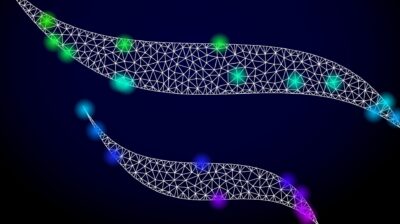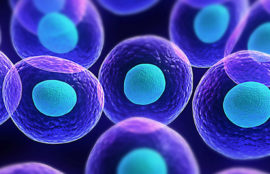I remember the German toilets. For the longest time, I couldn’t figure out why they manufactured them the way they did. From the toilets in the trains to the toilets in the older houses to the toilets in many of the older/cheaper hotels I stayed in in the 1970s and 1980s, the toilets were absolutely weird.
Instead of sitting over a bowl filled with water, into which one would poop, thus instantly dropping the stuff into water where it couldn’t again be smelled, when you sat on a German toilet you sat about 8 to 10 inches above a porcelain platform that was totally dry. At the very rear of the toilet was about a three-inch-diameter water drain.
When you pooped, your excrement would lay flat on the platform. You could smell it throughout the room. You could poke it with a stick or carefully examine it, if you were so inclined, or even scoop it out of the toilet if, for example, your doctor needed to examine it. Or heavens knows what else.
When you pulled the flush lever (or chain attached to the tank high up on the wall), the water would flush in from the front and wash the stuff off the platform, into the little water hole in the back, and down the drain. But until you pulled that lever or chain, there it was for the world to see.
And, over time, I noticed all those toilets vanishing. I lived in Germany for a year in the late 80s, and by then they were mostly gone; now you only find them in the oldest of buildings, and even there usually they’ve been replaced with systems that we’d recognize here.
That was when I learned why the Germans (and many other European countries) had these platform style toilets dating all the way back to Thomas Crapper’s popularization of the flush toilet in the late 1800s.
We All Have Intestinal Worms
It turns out that most mammals — including humans — typically have all sorts of intestinal parasites. The smallest and most helpful are the famous Acidophilus bacteria that help our gut digest food and absorb nutrients, but they’re invisible. The largest and most obnoxious are the various worms, the larger and more obvious ones being the hookworm and the tapeworm.
Up until the mid-20th century, there weren’t many drugs that would kill intestinal parasites in people without pretty severe (and sometimes even fatal) side effects, and food sanitation was such that even if a person did kill off all their intestinal parasites, they’d just get re-infected.
On the other hand, there were a number of well-known ways to hold down the number of parasites, to reduce the intensity and effect of their residence in one’s gut. Mainly these were referred to as purges, mostly harsh laxatives like the herb senna, combined with a sharp bitter (black walnut hull and wormwood were most common) that would cause the worms to let-go from the intestinal wall, and thus be flushed out with everything else as the laxative did its job.
So, the “lay and display” or “continental shelf” toilets actually had a purpose. People would take a look at their poop, and if they saw a visible mass of hookworms, roundworms, etc., or a lot of the rice-like segments indicating a tapeworm infection, they’d do a purge that week, which would hold down the worm population for a few months.
Now that our food supply is clean of these parasites, and we have a pretty good number of antibiotic-class drugs that are also anti-parasitic, worms in the gut are rare, and the need to examine one’s stool has vanished.
But, We May Have Traded One Problem For Another
The main story of modern, literate, technological culture, regardless of where it is in the world, the color of the people, or the language spoken, is that humans are a species apart.
Every culture has a story about it. We were uniquely created separate from all other animals, as in the Jewish and Christian stories of a creator who made us from the soil. We were brought here from Sirius, the Dog Star, according to the Dogon tribe in Africa. We descended from the sun, we are fallen gods, we sprung full-formed from the bud of a sacred lotus.
In virtually every creation story, humans are not part of nature. We’re separate, apart, unique, different, and not bound by the rules of nature. We wear clean clothes, pride ourselves on clean homes and offices, keep dirt (nature) away from our bodies, out of our food, and away from our homes. Because, of course, we are not part of nature — we’re separate from it.
This mentality is killing us off at levels from the most macro — global climate change that may render our planet uninhabitable — to the micro — our individual bodies. The best estimates from a variety of scientists and scientific bodies is that for somewhere between 20 and 100 years our population load on the planet has been so great that it’s unsustainable, and destroying the biosphere that supports us. But during that same time, odd things have been happening with our individual bodies.
Three generations ago, only one in 10,000 people had inflammatory bowel disease (IBD), Crohn’s disease was rare, and multiple sclerosis was virtually unknown to most people. Today 1 in 250 people has IBS, Chron’s Disease is widespread, and most people know somebody who has or is related to somebody who has MS. Ditto for psoriasis. Why? We see similar numbers with asthma, lupus, and a whole host of other autoimmune disorders.
Turns out it may all have to do with parasites: bugs, dirt, and — most amazing — worms.
Could Worms Be The Cure For our IBS, Crohn’s and MS Epidemics?
Back in the 1990s, gastroenterologist Dr. Joel Weinstock was editing a book on parasitic worms, also known as helminths. As Moises Valasquez-Mahoff documented in The New York Times Magazine in the June 29, 2008 issue, Dr. Weinstock noticed that as humans have become more and more successful at ridding themselves of parasites — particularly intestinal worms — we developed a whole host of conditions that seemed to be associated with inflammation (particularly of the bowel).
Noting, “We’re part of our environment; we’re not separate from it,” he wondered if reintroducing some of the less pathogenic parasites humans evolved coexisting with into people’s guts could resolve some of these conditions.
Using Trichuris suis, a worm endemic to pigs — and commonly infecting, without complications, pig farmers — Dr. Weinstock and others conducted a number of studies over several years, infecting people experiencing a wide variety of diseases with Tricuris.
The results were nothing short of startling. As Velasquez-Manoff reported in the Times Magazine:
After ingesting 2500 microscopic T. suis eggs at 3-week intervals for 24 weeks, 23 of 29 Crohn’s patients responded positively. Twenty-one went into complete remission. In the second study, 13 of 30 ulcerative colitis patients improved compared with 4 in a 24- person placebo group. … Trials using T. suis eggs on patients with multiple sclerosis, Crohn’s and hay fever are beginning in the United States, Australia, and Denmark, respectively. In Germany, scientists are planning studies on asthma and food allergies. Other European scientists, meanwhile, plan to replicate many of these experiments with Necator americanus, a human hookworm.”
Meanwhile, a British scientist — Dr. David Pritchard of the University of Nottingham — working in Papuea New Guinea in the 1980s, noticed that people there were commonly infected with a bit larger and more commonly considered a gross parasite, the Necator americanus, or common hookworm.
This is a worm that can enter the body through food, but more commonly does through the skin — people often get it from bathing in infected water or walking barefoot on dirt infected with the worm’s larvae. The larvae burrow through the skin, get into the bloodstream, migrate to the lungs where they get coughed up and swallowed. When they hit the small intestine, they turn into full-blown worms that attach themselves to the wall of the small intestine.
It was one of the more common parasites that people had up until the past few generations, with a severe hookworm infection causing anemia and even death.
Hookworms’ Unique Ability To Modulate The Human Immune System
But, Dr. Pritchard noticed, the people infected with it had virtually none of the autoimmune diseases like asthma and hay fever that had come to plague England since that nation went on a sanitation binge after World War II. Apparently, the worms produced a substance that modulated the human immune system, toning it down enough to keep our bodies from attacking the worms, but in the process also keeping our bodies from attacking our own cells and organs (the definition of an auto-immune disease).
So, as Elizabeth Svoboda documented in the July 1, 2008, New York Times:
In 2004, David Pritchard applied a dressing to his arm that was crawling with pin-size hookworm larvae, like maggots on the surface of meat. He left the wrap on for several days to make sure that the squirming freeloaders would infiltrate his system.
The itch when they cross through your skin is indescribable,’ he said. ‘My wife was a bit nervous about the whole thing.’”
After infecting himself to demonstrate the relative safety of the parasites, he got a grant from the British health service to do a double-blind placebo-controlled trial on allergy-suffering volunteers who were either given capsules containing worms or containing sugar. The results were startling. As Svoboda wrote in the Times:
Trial participants raved about their allergy symptoms disappearing. Word about the study soon appeared online among chronic allergy sufferers, and a Yahoo group on ‘helminthic therapy’ sprung up.
‘Many of the people who were given a placebo have requested worms, and many of the people with worms have elected to keep them,’ Dr. Pritchard said.”
Svoboda notes that, as the result of the publicity surrounding Pritchard’s successful 2006 clinical trials, there are even clinics springing up in third-world countries to cater to Americans and Europeans who want to get cured of their asthma, hay fever, psoriasis, or other autoimmune diseases by being infected with hookworms.
The fact is that we are not a species apart from all others on planet Earth. There’s ten times as much bacterial, viral, fungal, and parasitic DNA in your body as there is DNA from your own cells. We evolved on this planet along with every other form of life, and are designed to be a seamless part of the whole, a thread in the delicate web of life.
When we remove ourselves from that web of life, we do so at our own peril.
Original article here























Sorry, the comment form is closed at this time.